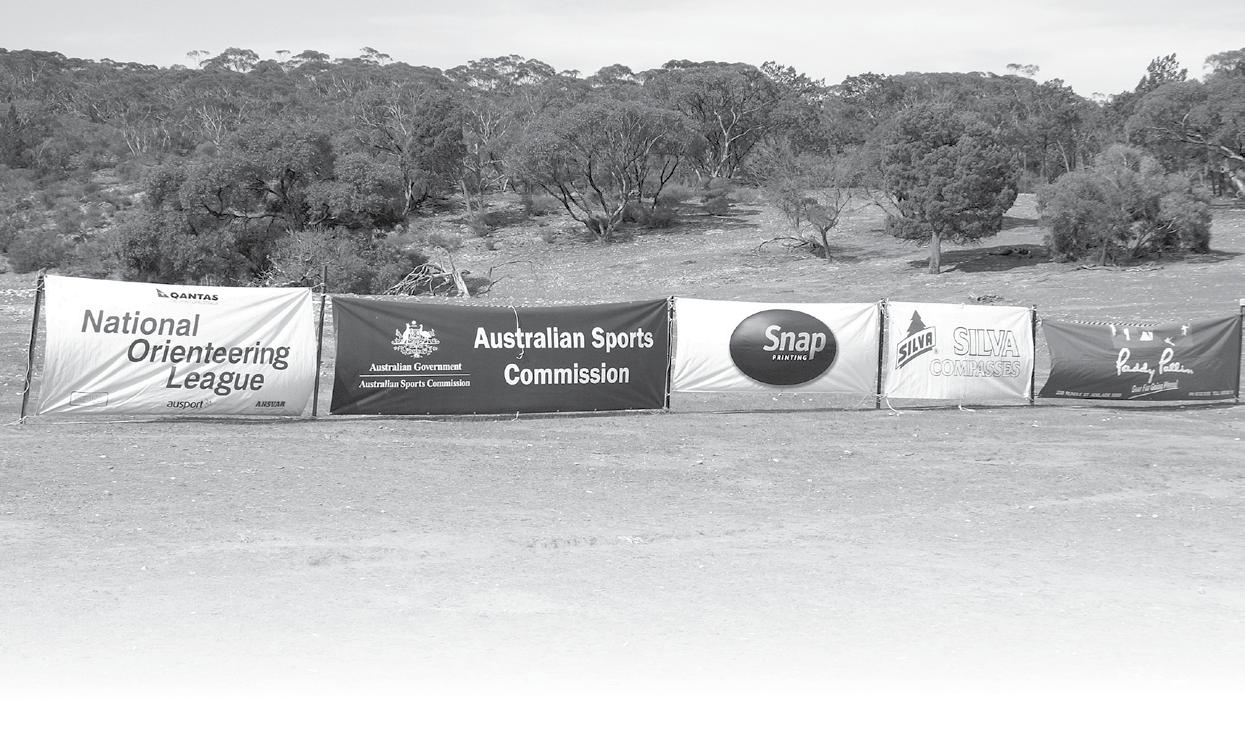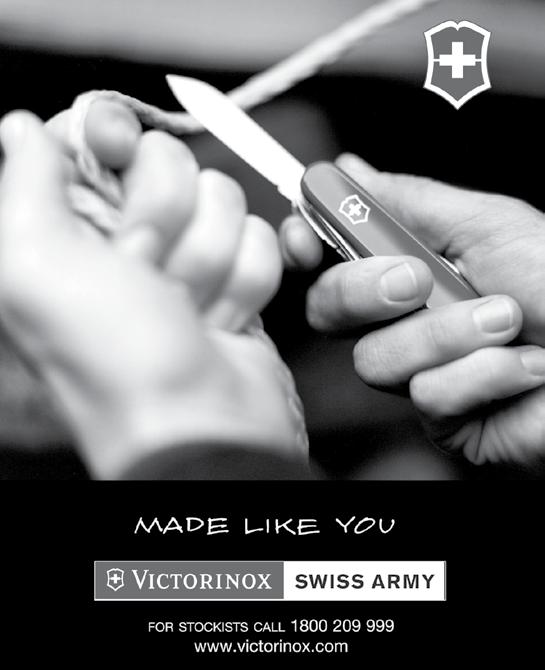
9 minute read
A PRESIDENT’S PERSPECTIVE
The Second Instalment of the Final Tetralogy
Bob Mouatt
The second instalment of my final tetralogy is about the media. My experience in working with the media dates back over 40 years when I wrote articles under a pseudonym for The Mirage (the RAAF Base Williamtown newspaper) and contributed items to The Newcastle Morning Herald on the RAAF Williamtown teams in the local Rugby competition. In the 1970s I edited a magazine for the Victorian Combined Services Rugby Club and contributed items to The Herald [Melbourne]. I changed sports in the late 1970s, and in the early 1980s wrote articles on Orienteering for The RAAF News. I have been contributing articles to The Canberra Times since 1986 and to the national media since 1997, so I consider I am well qualified to comment on working with the media.
Be Persistent and Consistent
One of the best items of advice I ever heard was at a media workshop in 1987 when Gerry Collins (ABC Radio) stressed the importance of being persistent and consistent. The media strongly dislikes contributors who are not consistent in providing followup information, especially if space has been reserved for a story or results.
Timeliness
The second key aspect in working with the media is timeliness. The media works to deadlines and if you want media coverage, you have to work to their deadlines. In seeking coverage in the national press, the key deadline is to get the information to AAP Sydney no later 6.00 pm AEST and preferably by 5.00 pm. This gives AAP time to process results and stories, and to distribute them to the national dailies before they finalise their pages. Achieving the AAP deadline is not easy given the time needed to confirm results and the distance that most major events are from fixed internet connections, but with the advent of wireless internet the task is a little easier. During the recent Australian 3Days I used a MiniMax [CDMA] modem to send the results for both AAP and the OA website from the event or on the road from the event. If you are an organiser always be mindful of the time pressures on the media liaison person to submit information to the media. I was especially grateful of the assistance provided by the SportIdent team during the recent carnival in South Australia. Television has much earlier deadlines, with most wanting to wrap up their stories by about 2.30 pm. While I have hired camera professionals to film major events on Betacam tapes [the main media used by TV networks] my experience is that regional TV stations will use reasonable high quality ‘grabs’ from ‘digicam’ cameras to complement stories as TV needs video to complete a story. Radio works to a much shorter timeframe and can take stories at short notice, but because of this news editors generally want immediate stories. If it is more than a few hours old they might not be interested. Extended interviews on general programs are different as they are often follow-up stories rather than ‘news’ stories. The lead time for articles in major national magazines for other than regular columns is in the order of 3 to 4 months so a lot of forward planning is required. Approaches to such magazines usually need to be made about 5-6 months ahead of the target date for an article.
Format, Style and Expectations
The third key element is providing material to the press in the format that it uses, and this can change from newspaper to newspaper. Each has its own format, as does AAP. It helps to get results and stories published if you provide your submission in the format used by AAP or the particular newspaper. Study the way the target newspaper presents the results and if it hasn’t published orienteering results, look at athletics results. For example, AAP does not include placings for the top three positions and generally publishes times in hours for times longer than 60 minutes. Also, it has specific ways of publishing State/ national abbreviations. Quite often people have unreasonable expectations of what the media might publish or broadcast. When I file stories with AAP or the press I usually provide three comprehensive sentences that cover what, when, why, who, how, etc. I provide all of my possible contact details as if they want more they will contact me, but if I provide too much they might not even look at the story. No more than 250 words is a good rule.
Evaluation
As a systems analyst and designer by profession I have two key rules:
• Always evaluate outcomes achieved
• It is a capital mistake to theorise without data [Sir Arthur
Conan Doyle] If money is no concern evaluation is easy as there are media monitors who can provide a good service for a price; however, if cost is an issue other means have to be found. Orienteering Australia is fortunate that a librarian is able to use her work assets to provide a monthly review of information published by the press in electronic form. This is a highly useful source. My other key source is the Woden Public Library (ACT) which stocks copies of the major dailies. A few days after filing stories/ results with AAP I go through each of the papers at the Library checking for material published. This approach can be impeded if particular papers or pages are removed, as happened with copies of the Melbourne Herald Sun after Easter. Also no copies of The West Australian were available. My post-Easter 2007 evaluation revealed: • The Canberra Times – published results on 5 days out of 5 [includes The Sunday Times] • The Sydney Morning Herald – 4 of 4 [The Sunday Sun did not publish any results] • The Daily Telegraph – 2 of 4 [The Sunday Telegraph did not publish any results]
• The Courier Mail – 2 of 4 [this was extraordinary as the CM seldom publishes results] • The Australian – 1 of 4 • The Age – 1 of 5 [includes The Sunday Age] • The Advertiser – 1 of 5 [includes The Sunday Mail] • The Herald Sun – none of the relevant pages/papers available • The West Australian – none of the relevant papers available • The Mercury – does not publish national results, but publishes stories about local orienteers My objective is a 50 per cent hit rate of the majors, excluding The Mercury, and on this occasion I have had to exclude The Herald Sun and The West Australian as they were not available. The hit rate for the other seven was just above 50 per cent so I was relatively happy, but I was disappointed with the lack of interest displayed by The Advertiser to what were local events and by The Australian as I always consider it to be the jewel in the crown. I was particularly pleased to see The Courier Mail publish results on two days as it seldom publishes Orienteering results. Evaluation of national radio is much more difficult and I have to rely on chance or comments from other orienteers.
A Final Perspective
Ten years ago I had expectations of improving media coverage of Orienteering. While I consider I have made a difference, I am far from satisfied. The major problem has been the power of the major sports such as cricket, the football codes, and the Olympic and Commonwealth Games sports to command media attention. Hanny Allston’s gold medal and some of Troy de Haas’ escapades have made a difference but we still have a long way to go before we are receiving the level of coverage I would like to see. However, when one considers that there are around 60 to 80 sports seeking media coverage, we can derive some satisfaction from progress over the past decade.
Postscript
You might have noticed that I omitted mention of websites and related electronic media. I did so because it would have added a completely new dimension to my article. We have some important examples of the impact of the new medium both in the reaction to Hanny Allston’s gold medal and the success of the Orienteering Australia website. Without ignoring the conventional media, more effort and skills will have to be dedicated to the new medium as it is the way of the future.
Executive Matters
Bob Mouatt
The Board of Orienteering Australia has had a very busy three months, in particular in coping with the loss of two Head Coaches in quick succession. The Board’s response has been to: • Appoint Kay Grzadka to the Executive Officer position vacated by Gareth Candy when he was transferred to Head
Coach. Kay has been involved in Orienteering in the ACT for over 20 years. She has an Associate Diploma in Applied
Computing and has considerable experience from working in a number of positions in the Australian Public Service.
She retired from full-time work in 2006, after reaching
Executive Level 1. Kay has been engaged to work an average of 15 hours per week. Her core days/hours in the
OA office will be Tuesdays and Thursdays from 10.00 am to 3.00 pm. The remaining hours will be spent on handling matters outside of core hours. • Appoint Tom Quayle as the interim Head Coach to fill the vacancy created by the sudden departure of Gareth
Candy to take up a position with the British Orienteering
Federation. • Restructure the Head Coach position into two positions: a Manager High Performance and a Manager, Coaching &
Officiating Development, with a view to the positions being advertised widely and filled in early July. This action was endorsed by the OA Council at the Annual General Meeting.
Annual General Meeting
The Annual General Meeting was held in Burra on Sunday 8 April. The minutes of the AGM were published on the OA website at www.orienteering.asn.au/administration/ minutes/ during May. There was no change in Board members or Chairs of Committees, and following the AGM the Board co-opted Robin Uppill to the Board as Director, Special Projects for a further 12 months. The Board foreshadowed presenting papers to the Annual Conference on 1-2 December 2007 on the following matters: • a strategy for reporting serious injuries and incidents to
Orienteering Australia. This is considered necessary to enable Orienteering Australia to provide advice to the State involved and to respond to potential media inquiries • changes to the Constitution and the Member Protection
Policy to bring them into line with the latest ASC Member
Protection template, to introduce a conflict resolution process and an tribunal/appeals process for disciplinary/ selection matters, and an appeals process for Member
Protection matters Changes will be made soon to the Operational Manual (at www.orienteering.asn.au/administration/op_manual/ ) in regard to: • National Junior Development Squad Selection Policy • Anti-Doping Policy to reflect the advent of the Australian
Sports Anti-Doping Agency • Non-elite rankings • Silva Medal (national Orienteer of the Year) • Sponsorships The Annual Report is at
www.orienteering.asn.au/administration/minutes/
The Operational Plans for 2007-2010 and some key statistics for 2001-05 are at www.orienteering.asn.au/administration/
stats/ Other Matters Under Action
Orienteering Australia is continuing to work with the Orienteering Association of NSW Inc and the International Orienteering Federation to reach an agreement on a contract with the organisers of the 2009 World Masters Games. Work is also in progress in regard to the Australia-New Zealand Challenge that will be conducted in conjunction with the Oceania Championships in Canberra in early October. Notices will be posted on the OA website and in State weekly e-bulletins.









